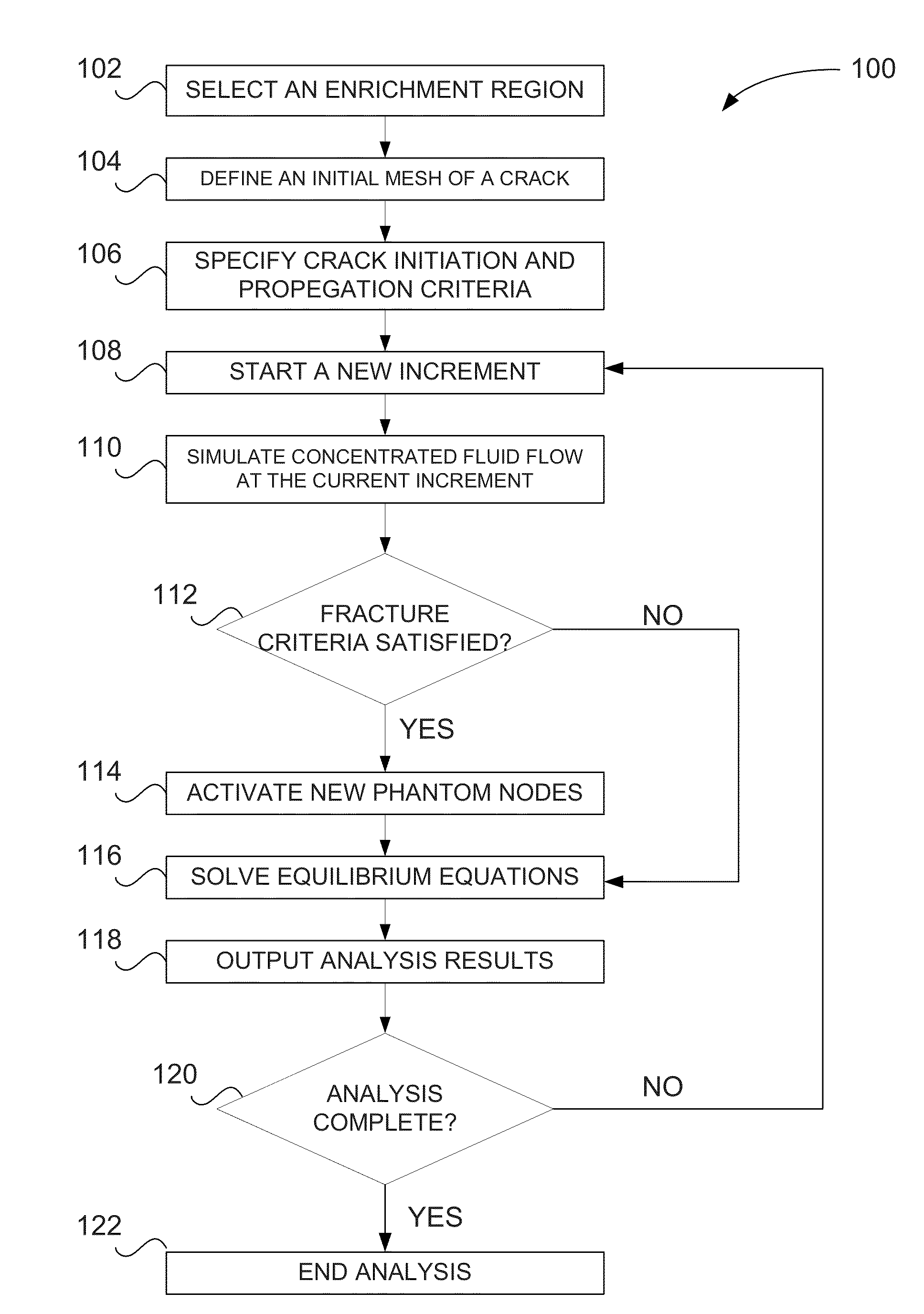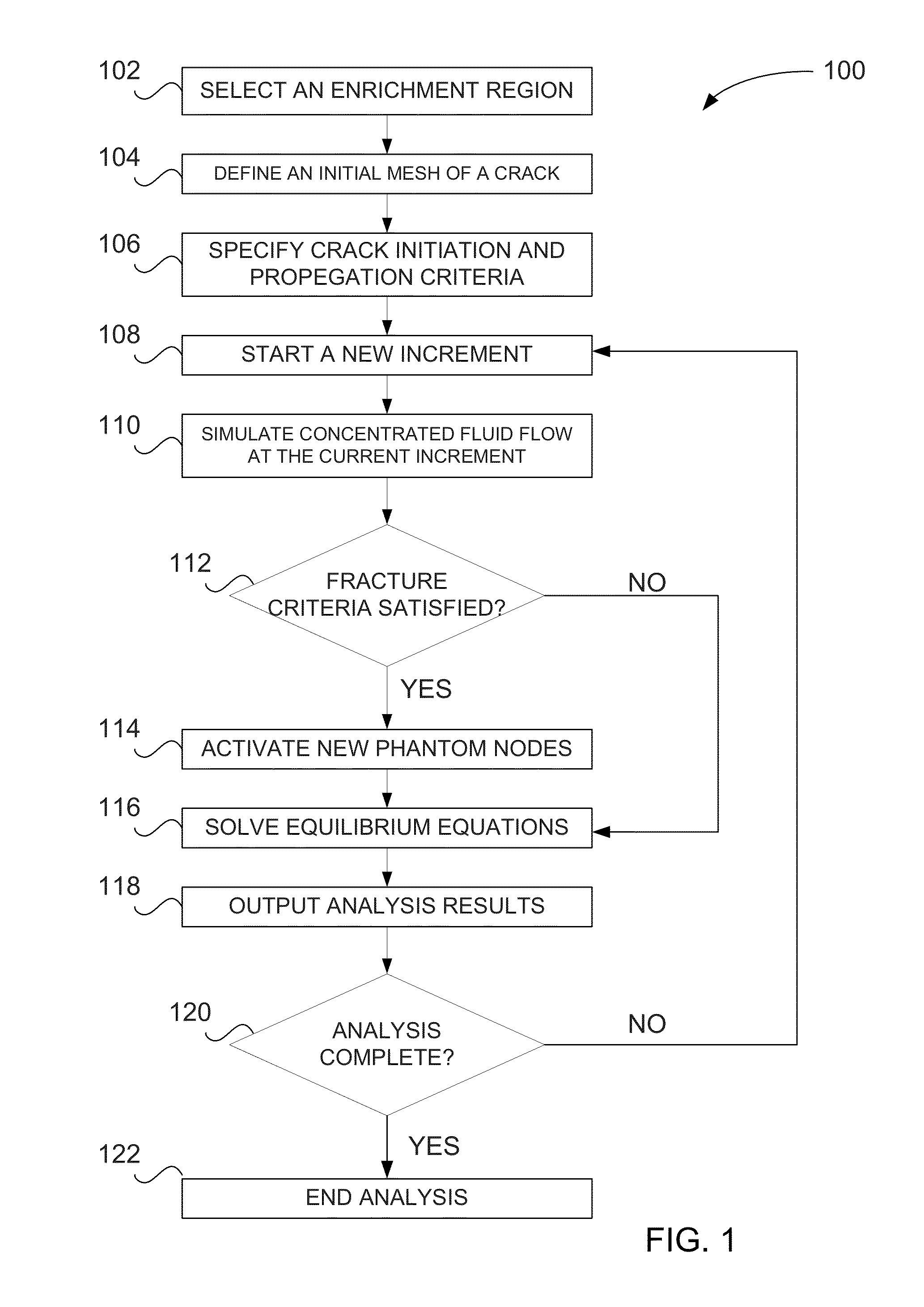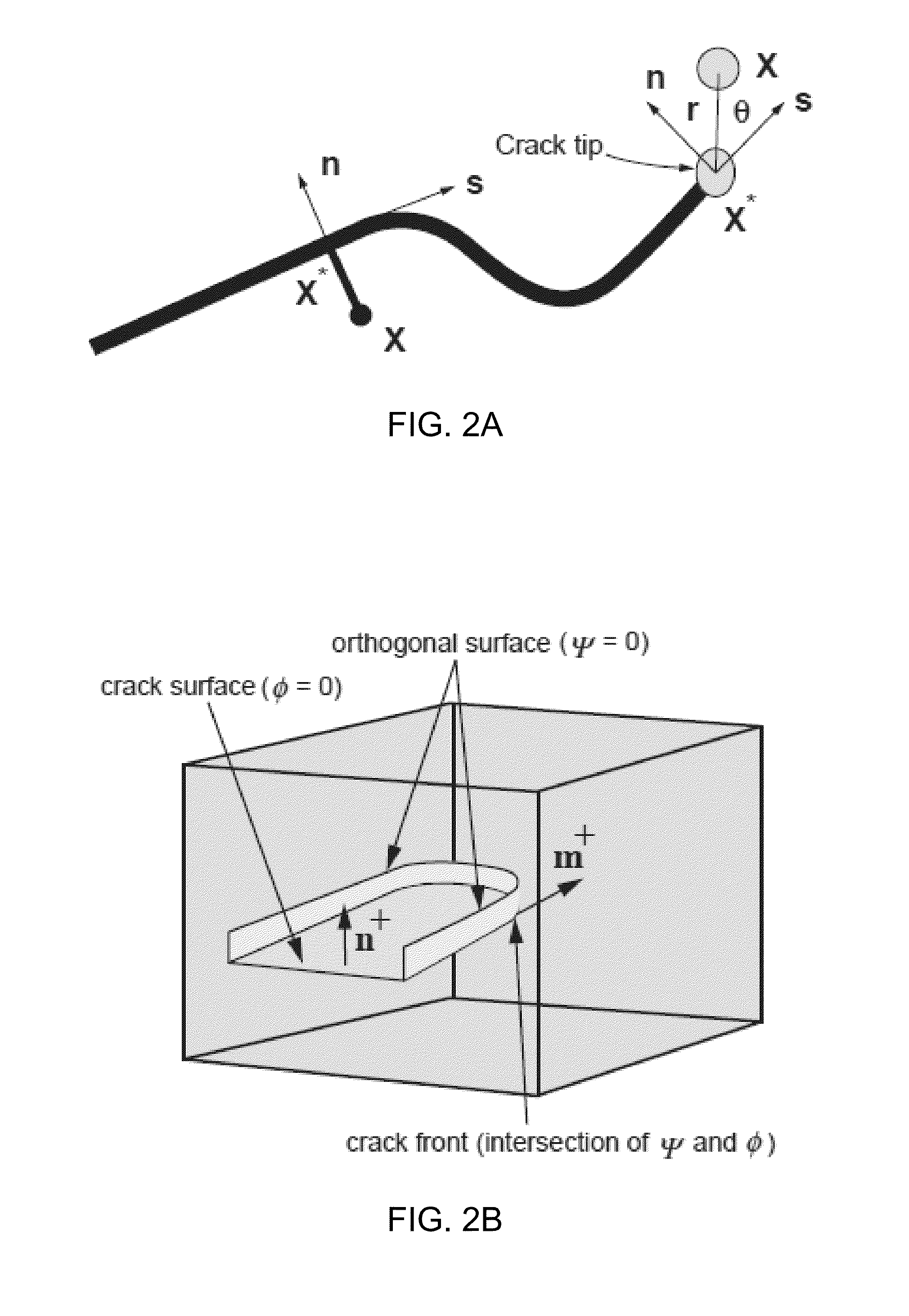Hydraulic fracture simulation with an extended finite element method
a finite element and hydraulic fracture technology, applied in the field of simulation modeling, can solve the problems of difficult to define the actual hydraulic fracture geometry, the mesh is required to conform to the geometric discontinuities, and the lefm-based methods typically give conservative predictions of fracture geometry
- Summary
- Abstract
- Description
- Claims
- Application Information
AI Technical Summary
Benefits of technology
Problems solved by technology
Method used
Image
Examples
Embodiment Construction
[0015]The embodiments described herein relate to an extended finite element method (XFEM) that alleviates the above-described shortcomings associated with meshing crack surfaces. These embodiments are based in on the concept of partition of unity, which allows local enrichment functions to be easily incorporated into a finite element approximation. The presence of discontinuities is ensured by the special enriched functions in conjunction with additional degrees of freedom. However, one advantage of the embodiments described herein is that these embodiments do not require the mesh to match the geometry of the discontinuities. Accordingly, the embodiments described herein provide a very attractive and effective way to simulate initiation and propagation of a discrete crack along an arbitrary, solution-dependent path without the requirement of remeshing.
[0016]Moreover, the embodiments described herein include the pore-pressure field for hydraulic fracture analysis. Specifically, addit...
PUM
 Login to View More
Login to View More Abstract
Description
Claims
Application Information
 Login to View More
Login to View More - R&D
- Intellectual Property
- Life Sciences
- Materials
- Tech Scout
- Unparalleled Data Quality
- Higher Quality Content
- 60% Fewer Hallucinations
Browse by: Latest US Patents, China's latest patents, Technical Efficacy Thesaurus, Application Domain, Technology Topic, Popular Technical Reports.
© 2025 PatSnap. All rights reserved.Legal|Privacy policy|Modern Slavery Act Transparency Statement|Sitemap|About US| Contact US: help@patsnap.com



